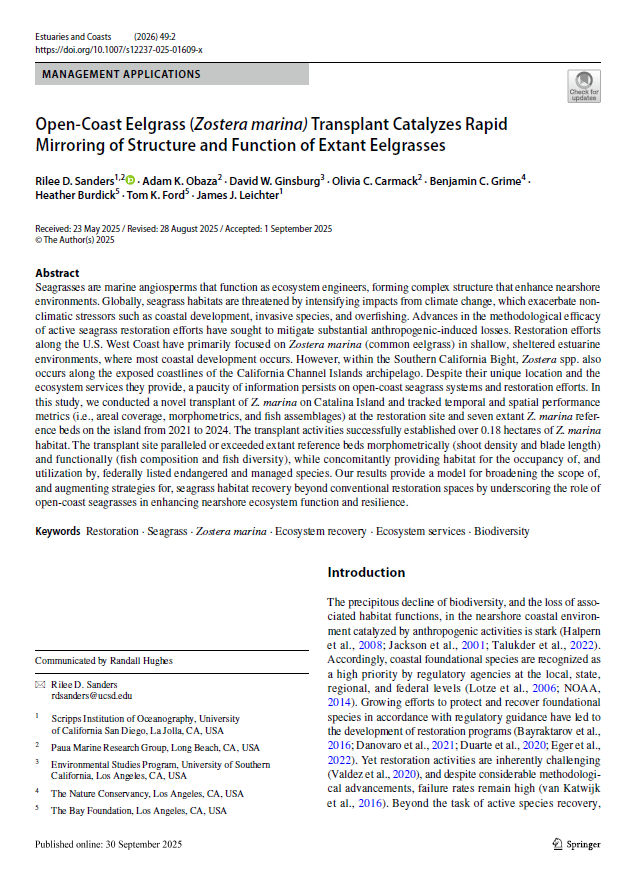Seagrasses are marine angiosperms that function as ecosystem engineers, forming complex structure that enhance nearshore environments. Globally, seagrass habitats are threatened by intensifying impacts from climate change, which exacerbate nonclimatic stressors such as coastal development, invasive species, and overfishing. Advances in the methodological efficacy of active seagrass restoration efforts have sought to mitigate substantial anthropogenic-induced losses. Restoration efforts along the U.S. West Coast have primarily focused on Zostera marina (common eelgrass) in shallow, sheltered estuarine environments, where most coastal development occurs. However, within the Southern California Bight, Zostera spp. also occurs along the exposed coastlines of the California Channel Islands archipelago. Despite their unique location and the ecosystem services they provide, a paucity of information persists on open-coast seagrass systems and restoration efforts. In this study, we conducted a novel transplant of Z. marina on Catalina Island and tracked temporal and spatial performance metrics (i.e., areal coverage, morphometrics, and fish assemblages) at the restoration site and seven extant Z. marina reference beds on the island from 2021 to 2024. The transplant activities successfully established over 0.18 hectares of Z. marina habitat. The transplant site paralleled or exceeded extant reference beds morphometrically (shoot density and blade length)
and functionally (fish composition and fish diversity), while concomitantly providing habitat for the occupancy of, and utilization by, federally listed endangered and managed species. Our results provide a model for broadening the scope of, and augmenting strategies for, seagrass habitat recovery beyond conventional restoration spaces by underscoring the role of open-coast seagrasses in enhancing nearshore ecosystem function and resilience.
Open-Coast Eelgrass (Zostera marina) Transplant Catalyzes Rapid Mirroring of Structure and Function of Extant Eelgrasses
